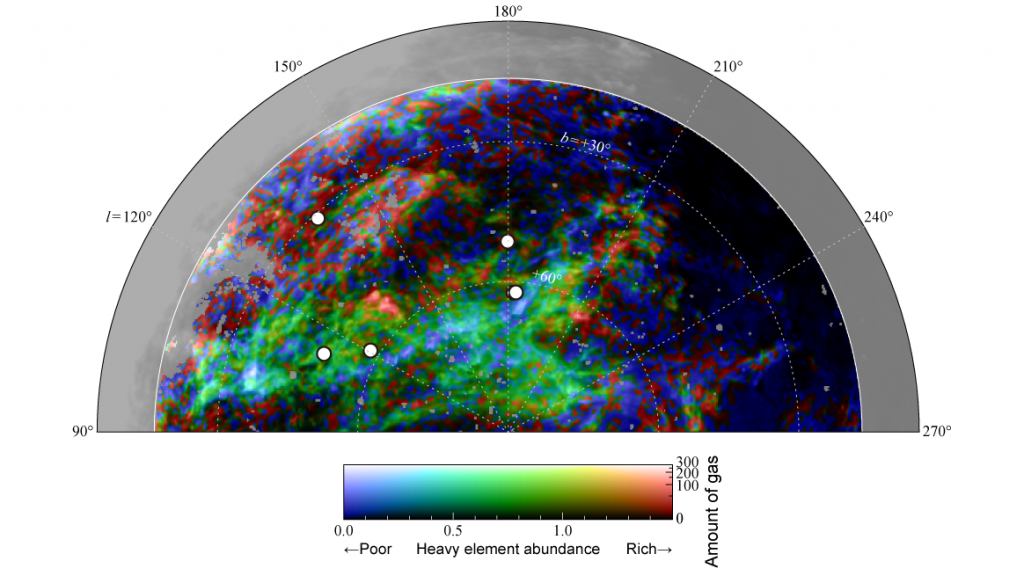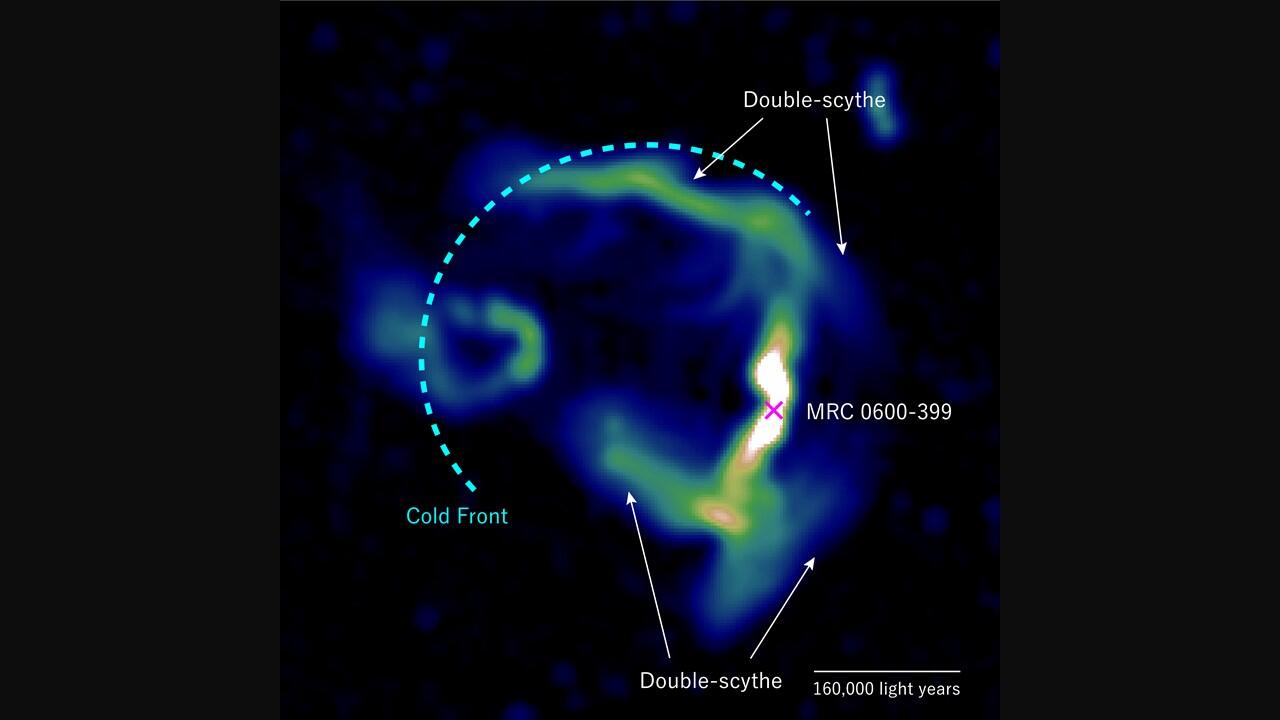
A groundbreaking study of the origins of intermediate-velocity clouds (IVCs) challenges a 20-year-old theory and suggests a new era of deep-space research. Researchers at Nagoya University in Japan discovered that IVCs have much lower heavy elements than previously reported. Rather than the materials being constantly recycled like water in a fountain, their findings suggest that the particles that make the clouds originated outside our galaxy. The group published their findings in Monthly Notices of the Royal Astronomical Society.
IVCs are a type of interstellar cloud characterized by their velocity. They are found at altitudes of thousands of light years away throughout the Milky Way. Gas clouds are important because they are sources of elements that enable star formation and the creation of planetary systems.
In the conventional model, elements are released back into the interstellar medium when the stars die in events called supernovae. This material is then reincorporated into the gas clouds. According to this model, the heavy elements in IVCs are generated through nuclear fusion reactions and supernova explosions within our galaxy.
Using a dust map by the Planck satellite and a map of radio waves emitted from hydrogen, Takahiro Hayakawa and Yasuo Fukui from Nagoya University have upended this theory by creating the first accurate map detailing the distribution of heavy element abundance in gas clouds falling into the Galactic Plane.
The Galactic Plane is a flat structure within the Milky Way galaxy, where stars, gas, and dust are concentrated, and where astronomical phenomena like star formation occur, gases ‘fall’ into the plane from the intergalactic medium driven by gravity.
By analyzing IVCs and high-velocity clouds, the researchers were surprised to find that the heavy element abundance in the IVCs differs from that of previous models. Their discovery challenges the traditional Galactic Fountain Model, a theoretical framework used to describe the cycling of gas within our galaxy.
“The Galactic Fountain model describes the cycle of gas being blown out from the Galactic Plane by events like supernova explosions and then falling back, similar to how a fountain continuously reuses water,” said Hayakawa. “Researchers often cite the model for explaining IVCs because they believed these clouds to have metallicities similar to those of the stars that supposedly produced them”.
Metallicities refer to the abundance of elements heavier than helium in astronomical objects like stars and galaxies. Hayakawa continued: “However, our results demonstrate much lower metallicities of IVCs, suggesting that IVCs are composed of primordial gas that originated from outside our galaxy.”
Using data from the Planck satellite and employing state-of-the-art observational techniques based on previously published high-resolution maps and advanced statistical analyses, they achieved unprecedented precision in their measurements and the amount of data.
“This research stands to break the 20-year stalemate on the origin of gas clouds falling into the Galaxy,” Hayakawa said. “It may solve a long-standing dilemma, the G dwarf problem, which states that old stars of 10 billion years old in the solar vicinity show high metallicity similar to the present-day metallicity of the Milky Way.”
The researchers expect their research to lead to new work on the growth and evolution of the Galaxy on a scale of 10 billion years. The implications of this research extend far beyond our galaxy, offering insights into the evolution of other galaxies throughout the universe.
The study, “Dust-to-neutral gas ratio of the intermediate- and high-velocity HI clouds derived based on the sub-mm dust emission for the whole sky,” was published in Monthly Notices of the Royal Astronomical Society on January 31, 2024, at DOI: 10.1093/mnras/stae302.
Authors
Takahiro Hayakawa, Yasuo Fukui
Media Contact
Matthew Coslett
- International Communications Office, Nagoya University
- Email: icomm_research@t.mail.nagoya-u.ac.jp
Top image: Galactic gas shows varying heavy element distribution: blue indicates scarcity, red indicates richness. Heavy elements are less abundant in gas than Galaxy.
(Credit: T. Hayakawa/Y.Fukui, Nagoya University)






